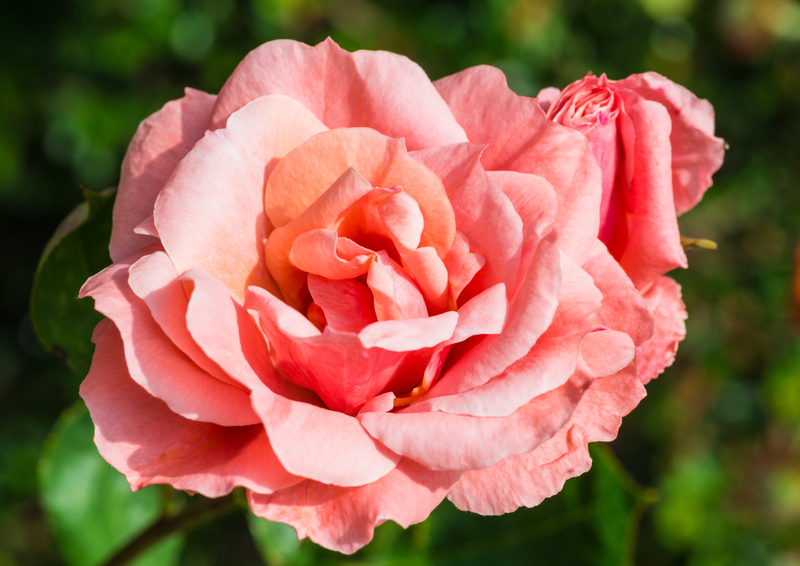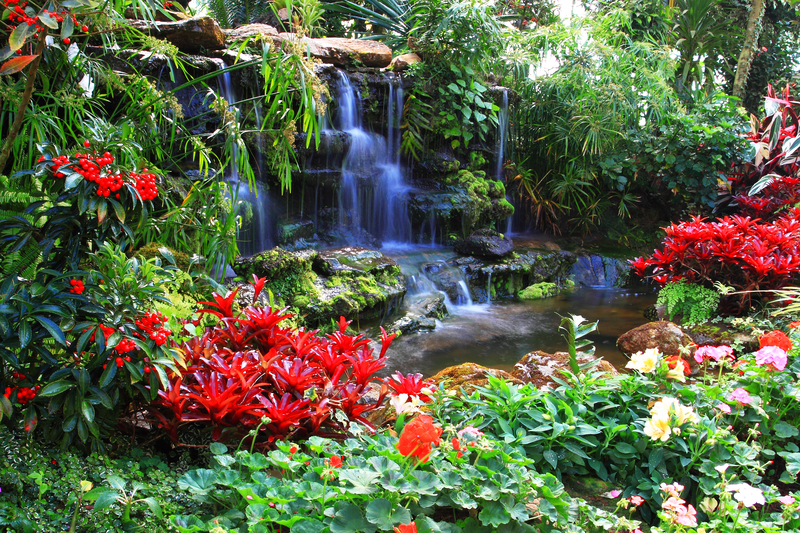Three Quick Tips to Build a Garden That Goes Anywhere
Have you ever dreamed of having a lush, green oasis, but felt limited by space, lack of soil, or the changing seasons? The great news is, you don’t need a sprawling backyard or even a permanent outdoor plot to build a garden that goes anywhere. Welcome to the world of portable gardening! Whether you want to create a mini paradise on your balcony, move your herbs wherever the sun shines, or travel with your own vegetables, mobile gardening can empower you to transform any spot into a green haven.
In this comprehensive guide, you’ll discover three quick, actionable tips to start a garden that moves and adapts to your lifestyle. Learn everything from selecting versatile containers to clever soil solutions and plant choices, making your mobile garden productive, attractive, and hassle-free.

Why Portable Gardening is Perfect for Modern Lifestyles
Urban living, unpredictable weather, and frequent relocations shouldn’t stop you from nurturing a thriving garden. A portable garden solves these dilemmas by allowing you to:
- Maximize limited space - Turn balconies, patios, windowsills, or even rooftops into functional green spaces
- Control exposure - Move plants to catch the right amount of sunlight or protect them from harsh weather
- Reduce permanent modifications - No digging, fencing, or landscaping required
- Travel with your plants - Take your beloved herbs, flowers, or veggies with you, preserving hard work and plant maturity
- Experiment freely - Try new plant types or arrangements without long-term commitments
Three Quick Tips to Build a Garden That Goes Anywhere
Tip #1: Pick the Right Portable Containers for Your Mobile Garden
At the heart of any garden that goes anywhere is the container. Choosing the ideal containers will directly impact the health, convenience, and mobility of your portable garden. Here are key factors to consider:
Choose Lightweight and Durable Materials
- Plastic pots: They are lightweight, affordable, and come in various colors & styles. Modern options mimic ceramic or terracotta and retain moisture well.
- Fabric grow bags: Breathable, easily foldable, and encourage healthy root growth. They’re perfect for root veggies like potatoes or carrots.
- Wooden planters: Offer a rustic look and natural insulation. Use them for edible plants or ornamental arrangements. Ensure they’re rot-resistant (like cedar).
- DIY containers: Upcycle buckets, crates, or baskets, adding holes for drainage. Repurposing cuts costs and adds unique style.
Pro Tip: Select containers with sturdy handles or wheels for maximum portability.
Prioritize Proper Drainage and Size
- Drainage is vital - Excess water can drown roots. Always ensure containers have drainage holes.
- Size matters - Match plant size and root depth to the container. Herbs and lettuce thrive in shallow pots; tomatoes and peppers need deeper containers.
Blend Function and Fashion
- Add color and style - Paint containers or use decorative wraps. This maximizes their use indoors and out.
- Stackable designs - Vertical planters make superb use of vertical space, perfect for small balconies or walls.
By following these container selection tips, you set a strong foundation for a truly mobile garden--one that’s both practical and aesthetically pleasing.
Tip #2: Create a Mobile-Friendly Soil Solution
Soil quality is the secret to a productive, healthy portable garden. Because you’re not relying on native ground soil, a smart soil mix--optimized for mobility and container life--is a must:
Build a Lightweight Potting Mix
- Soilless potting mediums are best. Mix coconut coir, peat moss, and perlite or vermiculite to create an airy, water-retentive, but well-draining base.
- Add compost for nutrients. Even just a few handfuls per container will feed plants naturally.
- Slow-release organic fertilizer ensures ongoing nutrition, especially for heavy feeders like tomatoes or peppers.
Optimize for Portability and Plant Health
- Avoid using garden soil--it’s heavy, may contain pests/weeds, and often becomes compacted in pots.
- Mulch the top layer (chopped straw, shredded bark, or even pebbles) retains moisture and suppresses weeds, reducing watering frequency for the mobile container garden.
- Monitor moisture--Portable gardens can dry out faster. Use moisture meters or your finger to test soil regularly.
Expert Insight: For ultra-lightweight containers, try adding perlite or rice hulls to further reduce soil weight.
By crafting the right soil mix, you not only make your garden easier to move but also ensure your plants will thrive wherever you take them.
Tip #3: Select Versatile Plants for On-The-Go Gardens
The final secret weapon for a successful portable garden is plant selection. Some plants naturally adapt better to life in containers and transportation. Here’s how to pick your plant all-stars:
Best Plants for Portable, Container Gardens
- Herbs - Basil, parsley, mint, chives, and thyme thrive in small containers and adapt to indoor or outdoor conditions.
- Leafy Greens - Lettuce, arugula, spinach, kale, and microgreens grow quickly and can be harvested repeatedly.
- Fruit & Vegetables - Cherry tomatoes, chili peppers, radishes, baby carrots, and bush beans are compact yet prolific.
- Compact Flowers - Marigolds, pansies, petunias, violas, and nasturtiums brighten up movable planters with bursts of color.
- Succulents & Cacti - Perfect for low-maintenance, drought-resistant, decorative mobile gardens.
Go for Dwarf or Miniature Varieties
- Look for patio, bush, or container strains. These have smaller root systems and shorter growth habits, making them ideal for mobile gardens.
- Try compact fruit trees - Dwarf citrus, fig, or olive trees add beauty and edible potential in surprisingly small pots.
Bonus Tip: Mix edible and ornamental plants for a pleasing look with practical yield in your traveling garden.
Rotate and Rearrange for Plant Health
- Rotate containers to ensure all plants get proper sunlight and air circulation.
- Bring indoors during cold snaps or extreme rain. A big bonus when you have a garden that goes anywhere!
With the right mix of mobile-friendly plant varieties, you can enjoy fresh harvests, vibrant color, and green beauty on any stoop, deck, or window ledge, no matter where life takes you.
Essential Care and Maintenance Tips for a Mobile Garden
Once your portable, go-anywhere garden is up and growing, ongoing care is key to long-term success. Here’s how to keep it thriving:
- Water wisely: Pot-grown plants need regular, sometimes daily moisture. Use self-watering pots or drip irrigation for convenience.
- Feed with balanced fertilizer: Every few weeks, supplement compost with a half-strength organic liquid feed to replace nutrients lost with frequent watering.
- Check for pests and disease: Mobile gardens are less prone, but pests can still hitchhike. Inspect leaves and soil weekly.
- Re-pot as plants grow: Increase pot size or refresh soil annually for continued vitality.
- Plan for easy movement: Use trays, dollies, or rolling platforms for large planters. This prevents injury and protects floors or decks.
With these best practices, your flexible, movable garden will flourish season after season, wherever you decide to place it!
Creative Ideas to Expand Your Portable Garden
Ready to get creative? Here are inspiring, advanced ways to take your anywhere garden to the next level:
- Vertical gardens: Build a DIY plant wall with pockets or shelves. Great indoors or on small patios.
- Hanging planters: Suspend baskets from railings, beams, or ceiling hooks for a floating garden effect.
- Wagon gardens: Plant in deep wooden wagons for kid-friendly, fully mobile veggie plots.
- Shoe organizer herb garden: Repurpose fabric shoe holders for herbs on balcony rails or doors.
- Travel garden boxes: Plant herbs in small, lidded boxes for camping, RV, or moving days.
Don’t be afraid to experiment—that’s the freedom of a garden you can move anywhere!

Frequently Asked Questions about Building a Garden That Goes Anywhere
How often should I water containers in a mobile garden?
Container-grown plants dry out faster than in-ground plants. Check soil moisture daily, especially in hot or windy weather. Most will need water every 1-3 days, but adjust based on plant needs and size of containers.
Can I grow a full vegetable garden entirely in pots?
Absolutely! With proper-sized containers and quality potting mix, you can grow tomatoes, peppers, beans, greens, root veggies, and more. Stick to compact or bush varieties and harvest regularly.
How do I protect my portable garden from sudden weather changes?
One of the top benefits of a portable garden is you can bring plants indoors during storms, heatwaves, or frosts. Use plant caddies for heavy pots, and temporarily group sensitive plants in sheltered spots.
Will my plants get enough sun if I move them indoors?
Most edibles and flowering plants need at least 6 hours of sunlight daily. Place containers near south- or west-facing windows. For insufficient natural light, supplement with grow lights for healthy growth.
Start Your Go-Anywhere Garden Today!
No matter your location or lifestyle, building a garden that goes anywhere is within reach. With these three quick, expert tips--selecting the right containers, crafting a smart soil mix, and choosing versatile plants--you’re on your way to enjoying fresh harvests and greenery wherever life takes you.
Embrace the freedom, flexibility, and joy of a portable garden. Start small, think creatively, and watch your mobile paradise thrive. Remember: the only limit is your imagination!
Happy gardening, wherever you may go!